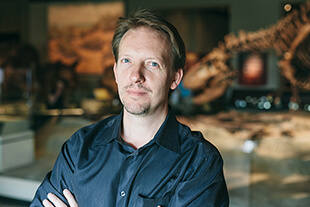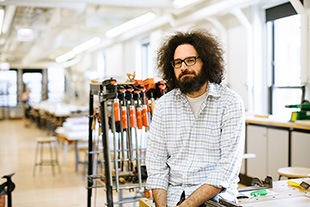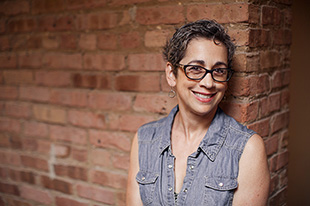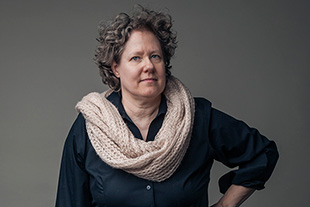K. Crom Saunders
Communication, Culture, and Society
K. Crom Saunders teaches students how to move from ASL to English (and vice versa).
What goes into American Sign Language interpretation? How do you keep your cool in a stressful interpreting session? How do Deaf and speaking cultures come into play? These are the sorts of questions ASL-English Interpretation associate professor K. Crom Saunders asks in his Columbia College Chicago classroom. The teacher, performer, and interpreter talks to us about what makes Columbia stand out.
How did you get involved in professional interpretation?
I grew up deaf, so I’ve been using sign language my whole life, as well as the services of an interpreter. I got involved with interpreting through theatre. When I started to interpret theatre, I noticed that there were a lot of complexities with the linguistic interpretation.
Then I became more involved within the interpreter community. I took some classes, and that led to workshops. I also give workshops throughout the U.S. related to this.
How did you start with theatre interpretation?
One of my friends actually turned me on to theatre interpretation. She told me about these opportunities and pulled me in. I’m really into literature and theatre, so when she approached me and asked me if I wanted to interpret theatre, my response was, “You know I’m deaf, right?” [It’s] a different process than a hearing interpreter. I would take the scripts and memorize them and translate them and perform that during an actual performance.
How does your creative writing background help with ASL?
Language in general is something that really has influenced my work. Having a great knowledge of English and ASL, and knowing the complexities of each language—their syntax, their structures, and how they are very different—that’s really important for interpreters. I also started transcribing English to ASL and ASL to English, and that’s a real challenge, because ASL is not a written language.
The ASL Department offers two degrees, a BA in Deaf Studies and a BA in ASL-English Interpretation. You work with students in the latter; how do you teach students to interpret?
We look at language proficiency. It’s not just the ability to sign. We also look at how they restructure into the target language from the source language. It’s very important to know that there are different ways to sign different things.
So I teach students how to be able to analyze people’s different styles within American Sign Language. There are two very strong cultures at hand when you’re interpreting [ASL and English]. [It’s] important to have an understanding of both cultures, so you can mediate that as well as the language itself.
How does Columbia connect with Chicago’s Deaf culture?
We are the largest interpretation program in the Midwest. We’re also the most established and oldest. We work very closely with the Deaf community in Chicago, and we’ve been around for 20 years. All the ASL teachers are deaf. All the tutors are deaf. We hire people straight from the [Deaf] community.
We strongly, strongly encourage our students hang out with the Deaf community as much as possible. We always encourage that social aspect within our department. I think the academic, as well as social, is very important in order to create a great interpreter.










